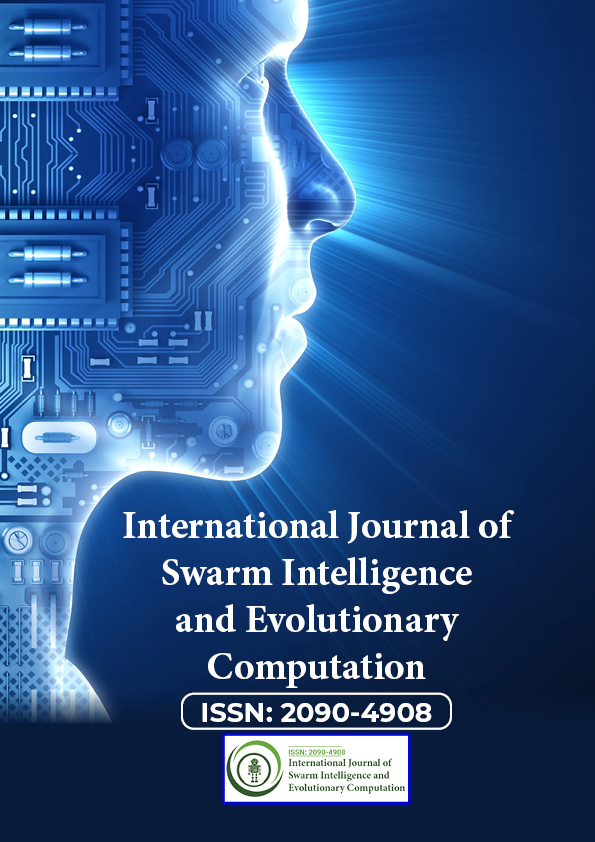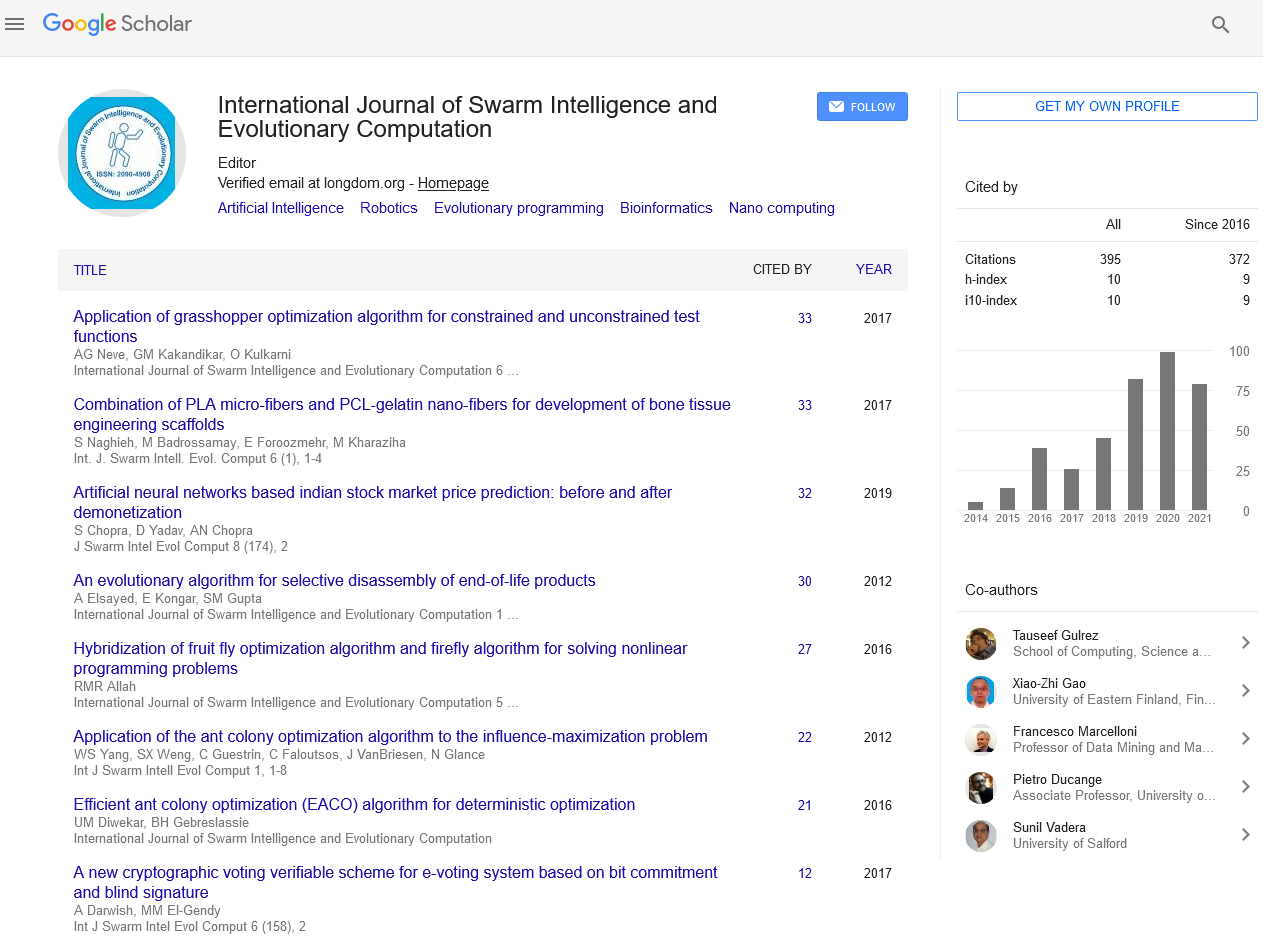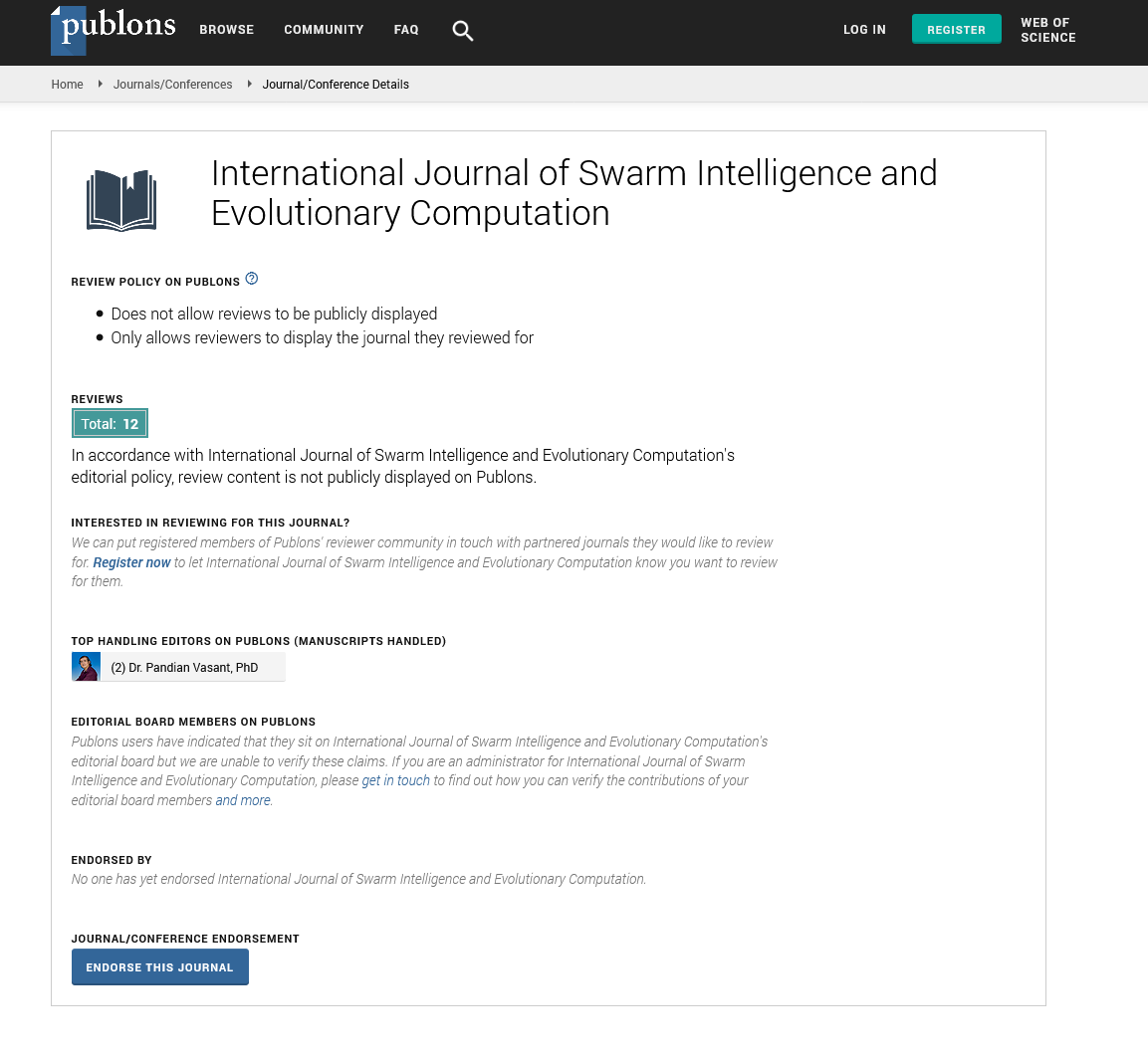Indexed In
- Genamics JournalSeek
- RefSeek
- Hamdard University
- EBSCO A-Z
- OCLC- WorldCat
- Publons
- Euro Pub
- Google Scholar
Useful Links
Share This Page
Journal Flyer

Open Access Journals
- Agri and Aquaculture
- Biochemistry
- Bioinformatics & Systems Biology
- Business & Management
- Chemistry
- Clinical Sciences
- Engineering
- Food & Nutrition
- General Science
- Genetics & Molecular Biology
- Immunology & Microbiology
- Medical Sciences
- Neuroscience & Psychology
- Nursing & Health Care
- Pharmaceutical Sciences
Perspective - (2024) Volume 13, Issue 5
Particle Swarm Optimization in Bioinformatics and Data Science
Azita Kargaran*Received: 26-Aug-2024, Manuscript No. SIEC-24-27456; Editor assigned: 28-Aug-2024, Pre QC No. SIEC-24-27456 (PQ); Reviewed: 11-Sep-2024, QC No. SIEC-24-27456; Revised: 18-Sep-2024, Manuscript No. SIEC-24-27456 (R); Published: 25-Sep-2024, DOI: 10.35248/2090-4908.24.13.391
Description
Particle Swarm Optimization (PSO) is an optimization technique inspired by the collective behavior of birds flocking, fish schooling and other decentralized systems in nature. It has gained prominence for its efficiency in solving complex optimization problems, particularly in fields like bioinformatics and data science. PSO’s ability to navigate large, highdimensional solution spaces while maintaining an explorationexploitation balance has made it a powerful tool in these fields. In bioinformatics, where the complexity of biological data can overwhelm traditional algorithms, PSO stands out for its versatility. Similarly, in data science, PSO has become instrumental in feature selection and optimization tasks, helping to improve the performance of machine learning models.
PSO in bioinformatics: Solving complex biological problems
Bioinformatics is a multidisciplinary field that deals with vast and often high-dimensional datasets, such as genomic sequences, protein structures and gene expression data. Many of these datasets contain intricate patterns and require advanced optimization methods to uncover meaningful insights. Traditional optimization methods, including gradient-based techniques, are often ineffective for such problems because of the highly complex, non-linear nature of biological systems. This is where PSO provides a valuable alternative, offering efficient search capabilities for complex optimization problems.
One of the major challenges in bioinformatics is gene selection, where the goal is to identify a subset of genes most relevant to a particular disease or biological condition. For instance, in cancer research, identifying key genetic markers can lead to more accurate diagnostic tools and personalized treatment plans. PSO has been successfully applied to gene selection by optimizing the feature subset to maximize classification accuracy. By simulating the movement of particles through the feature space, PSO can explore a large number of possible gene combinations, gradually converging to the optimal set of genes that are most predictive of a disease.
PSO has also proven useful in clustering biological data. In tasks such as gene expression analysis, PSO helps group genes or samples that exhibit similar patterns, allowing researchers to identify subgroups or clusters of genes involved in specific biological processes or diseases. For example, in cancer genomics, PSO can be used to identify gene clusters associated with different cancer types or stages, which aids in discovering biomarkers and therapeutic targets. By optimizing clustering algorithms like k-means or structured clustering, PSO enhances the accuracy and robustness of the resulting clusters, which is important for understanding the underlying biological mechanisms.
Enhancing data science with PSO: Feature selection and optimization
In data science, optimization is an essential step in improving the performance and efficiency of machine learning models. One of the most important tasks in this field is feature selection, which involves identifying the most relevant variables in a dataset to improve the model’s accuracy while reducing its complexity. PSO is particularly effective in feature selection because it can efficiently search large feature spaces and identify subsets of features that provide the best predictive performance. For instance, in classification tasks, PSO can be applied to select the most informative features, thus improving the accuracy of the model and reducing overfitting, which can occur when too many irrelevant features are included.
The reduction in the number of features not only leads to better model performance but also decreases the computational burden. As datasets grow larger and more complex, the time required to process and train models increases exponentially. By reducing the number of features, PSO helps make the models more interpretable, faster to train and more efficient overall. This is particularly beneficial in domains such as genomics, where the number of features can be in the thousands and the data is often sparse.
Particle Swarm Optimization is a versatile, bio-inspired optimization technique that has demonstrated immense potential in bioinformatics and data science. By simulating the collective behavior of particles in a swarm, PSO efficiently explores complex, high-dimensional search spaces and converges to optimal or near-optimal solutions. In bioinformatics, PSO has been used to tackle a variety of problems, including gene selection, protein structure prediction and clustering biological data, helping researchers make more accurate predictions and discoveries. In data science, PSO has become a valuable tool for feature selection and hyperparameter optimization, improving the performance and efficiency of machine learning models. As data continues to grow in size and complexity, PSO’s ability to handle large, involved optimization problems ensures its continued relevance and success across these rapidly advancing fields.
Citation: Kargaran A (2024). Particle Swarm Optimization in Bioinformatics and Data Science. Int J Swarm Evol Comput. 13:391.
Copyright: © 2024 Kargaran A. This is an open-access article distributed under the terms of the Creative Commons Attribution License, which permits unrestricted use, distribution and reproduction in any medium, provided the original author and source are credited.


